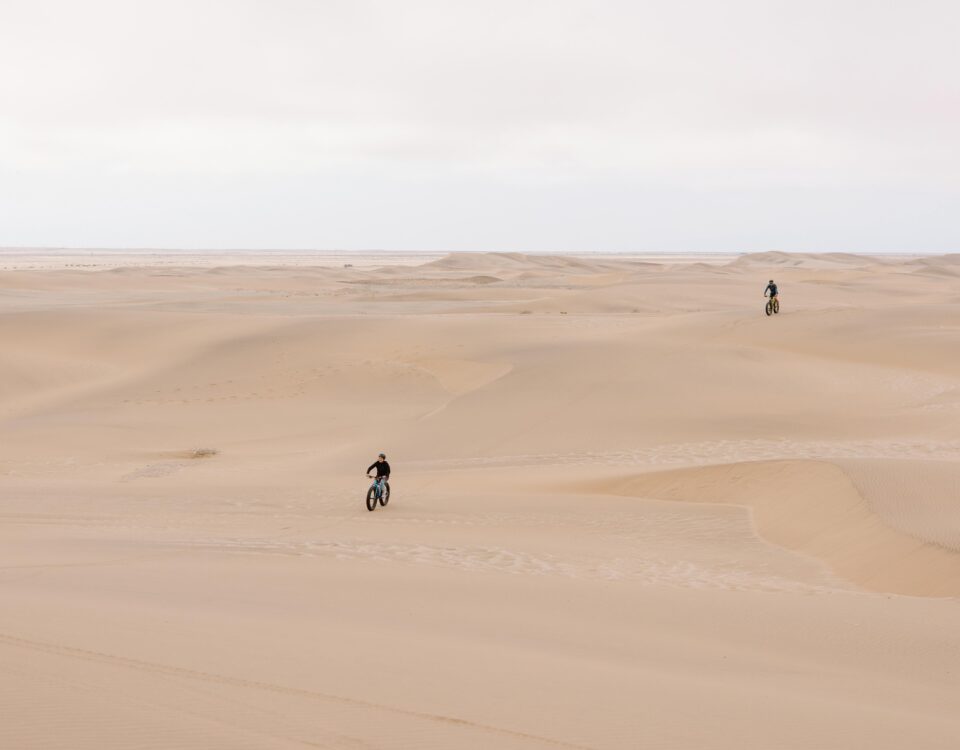Okavango Delta – proposal to name as a World Heritage site
March 14, 2013Drought prevails in Namibia
March 14, 2013Photos and blog post by Annabelle Venter
While for some people Saturdays might mean shopping in the mall, there’s another more restful way to start your weekend.
On the first Saturday of every month, the National Botanical Research Institute in Orban street together with the Botanical Society of Namibia, offer a 2 hour walk in the gardens guided by a local botanist. I decided to go along last Saturday to see how the late rains, or rather lack of them, has affected the plants and to find out what is flowering now.
There was a great turnout of visitors as well as members, with three botanists guiding one German-speaking group and two English-speaking ones.
First stop was the sausage tree, Kigelia africana outside the offices. Our guide Coleen Mannheimer explained that the fruit or great ‘sausages’ of this particular tree never reach the size they do elsewhere in Africa, possibly because here in Windhoek, they don’t have the right pollinating agents such as fruit bats.
Round the corner we found the beautiful Moringa ovalifolia in flower, full of fresh green leaves and buzzing with insects.
There was a lovely breeze blowing and my attention was caught by the rustling paper bark on the next plant we stopped at, Cyphostemma currorii, which is full of fat juicy leaves at the moment – not edible though! Right next to it though was something I know to be a great garden subject and full of pretty pink flowers now –Adenium boehmianum. This attractive thick-stemmed plant flowers for up to 6 months making it popular with Namibian gardeners.
Colleen stressed that cacti are a huge problem in Namibia and urged us all to discourage people from planting any.
They are not indigenous to Namibia but from South America and they are posing an enormous threat to our wildlife and wild plants.
Thorns that get into animals fur or skin need to be surgically removed or they fester. They grow fast and force out local plant species. Plants need to be carefully removed and properly disposed off to prevent accidental seeding.
I was disappointed, but not surprised, to learn that none of the lily species have flowered this year due to the lack of rain, but a few had leaves on.
In a cleared, raised area we saw some specimens of the kraal aalwyn or Aloe asperifolia which we usually see along the roadside about 60kms from Swakopmund. These plants were relocated to the gardens when they were removed during mining construction work out in the desert last year. They have not yet flowered here, but near Swakopmund they are due to flower next month.
I also noticed that the first few Aloe littoralis, or Windhoek aloe as it’s known, are starting to produce buds and should be flowering on next month’s walk.
Coleen told us about the four key species that define the woody, central highlands of Namibia, showing us how to identify them in the garden:
- Camphor bush ( Tarchonanthus camphorates)
- Mountain thorn (Acacia hereroensis)
- Common guarri bush (Euclea undulata)
- Kudu bush (Combretum apiculatum)
If you see an acacia tree flowering now in Windhoek along a river bed it’s likely to be the Acacia karoo or soetdoring/sweet thorn.
The last interesting tip I learnt from Coleen is that when you need a hand lens to examine plants close-up, you can simply turn your binoculars around and you’ll have a magnifying glass!
The next Saturday walk will probably be completely different again since it’s starting to rain as I write this – so go along on the 6th of April at 08h00 and check it out. The Windhoek aloes should be starting to flower, if nothing else!
More about our guest blogger Annabelle Venter:
Annabelle Venter is a valuable and regular contributor to Travel News Namibia and other Venture Publication publications.
She has lived more than half her life in Namibia and is based in Windhoek. She says she loves to lose here in the “beauty of my spot on the planet. I write about it, photograph it and try to capture it in my ceramic work. I feel most at home outdoors, in a shady riverine forest anywhere north-east of here”.
Fittingly Annabelle says her favourite soundtrack is the “African bushveld at night. Mozart will also do”. Her motto is to try and “live lightly on the earth”.






